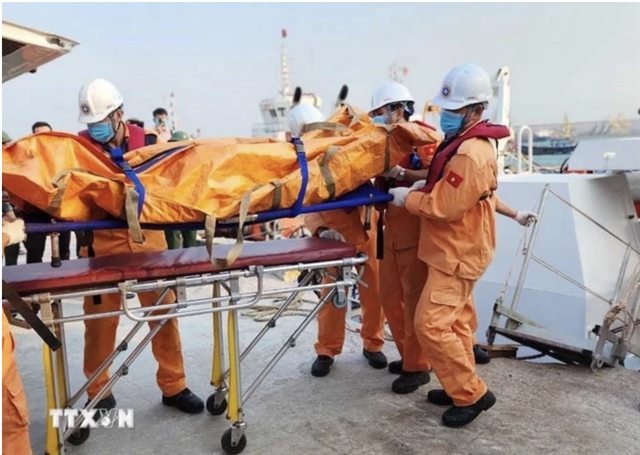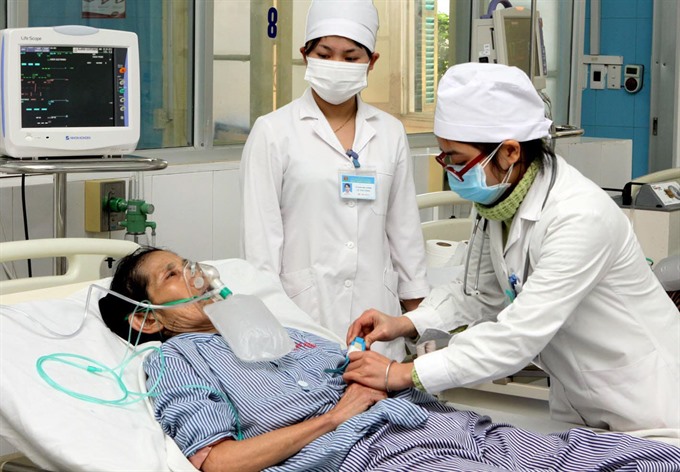 Society
Society

Shortage of funding and trained personnel, as well as social discrimination, are undermining Việt Nam’s hard-won success in combatting the scourge of tuberculosis.
 |
| Doctors treat a TB patient in the intensive care unit of the Central Pulmonary Tuberculosis Hospital in Hà Nội. — VNA/VNS Photo Dương Ngọc |
HÀ NỘI — Shortage of funding and trained personnel, as well as social discrimination, are undermining Việt Nam’s hard-won success in combatting the scourge of tuberculosis.
On the occasion of World TB Day 2017 (March 24) Nguyễn Viết Nhung, director of the Hà Nội-based Central Pulmonology Hospital that oversees over 60 lung disease hospitals around the country, provided an overview of the country’s efforts to control the world’s No 1 killer infectious disease and set out its ambitious goals.
Nhung, who is also head of the country’s national TB prevention and control programme, told the Vietnam News Agency that Việt Nam ranked 15th among 30 countries with the highest number of TB patients in the world. It also ranked 15th among 30 countries with the biggest burden of multi drug-resistant TB in the world.
According to Nhung, Việt Nam’s success in tuberculosis prevention has been recognised internationally over the years. Each year, the country detects and provides treatment for 100,000 people with tuberculosis, with a cure rate of over 90 per cent for new cases.
Most of the new technologies applied in tuberculosis treatment appear to be effective. However, the country faces a shortage of competent healthcare providers, especially in disadvantaged remote areas, he said.
Funding was also an issue as Việt Nam is estimated to need at least US$66 million to reduce the prevalence of patients with TB per 100,000 people from the current average of 112 to 20 by 2030, essentially eliminating tuberculosis as a public health problem.
But the national programme on TB prevention and control is currently funded at $26 million a year, including $19 million from foreign aid, Nhung said.
Việt Nam has also experienced an alarming rate of multi drug-resistant tuberculosis (TB), he said.
About 130,000 people are diagnosed in Việt Nam with TB yearly, of whom about 7,000 have both TB and HIV, over 5,000 have multi drug-resistant TB, and about 300 patients have extensively drug-resistant TB.
Nhung said that the high rate of multi drug-resistant TB was the result of patients’ failure to strictly follow doctors’ treatment regimes. “Skipping drugs or treatment also causes difficulties in TB prevention and control for the community,” Nhung said.
Nhung said that TB patients were vulnerable to other infectious diseases like HIV. Most TB patients are poor, with little access to proper understanding about the disease and measures to curb its spread.
Social discrimination has made TB patients hide their disease, compounding the problem, Nhung said.
At a conference early this year in HCM City, Nguyễn Thị Thanh Nhàn, head of the southern region’s national TB prevention and control office, said that an increase in the number of resistant TB cases has occurred in the southwestern region of the country.
Nearly 1,300 patients with such resistant TB were diagnosed every year in the southwestern region, accounting for 25 per cent of the total number in the country. Between 2011 and 2015, the prevalence of patients with TB per 100,000 people in the region was 141.
At a meeting to mark the World TB Day held in HCM City yesterday, the head of the city’s Public Health Association, Lê Trường Giang, said that a programme titled “Right Care” should be expanded across the city to better detect new TB patients or those with multi drug-resistant TB through new testing techniques. The programme also focusses on detecting TB among children.
Nguyễn Trung Hòa, director of the Gò Vấp District Preventive Medicine Centre, said the district launched the “Right Care” Programme in 2014 and saw a drop in the rate of TB patients who skipped treatment, from 7 per cent to 0.8 per cent.
At a similar meeting held last week in northern Sơn La Province, vice director of the province’s health department, Trần Văn Ngọc, said that in the mountainous disadvantaged province, a majority of TB patients were the bread-winners of poor families. “They found it hard to follow six-or-12-month-long treatment despite receiving free medicines,” Ngọc said.
More public communication and participation are needed to improve TB prevention and control, he said, adding that removing social discrimination over the disease would help detection and cure.
According to the World Health Organisation, TB claims 5,000 lives each day. The theme of World TB Day 2017 is “Unite to End TB.”
“TB strikes some of the world’s poorest people hardest,” said Dr Margaret Chan, WHO Director-General. “WHO is determined to overcome the stigma, discrimination, and other barriers that prevent so many of these people from obtaining the services they so badly need.” — VNS









